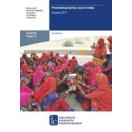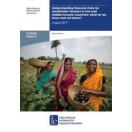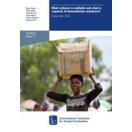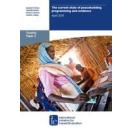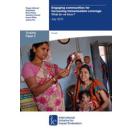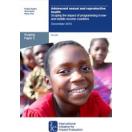
Adolescent sexual and reproductive health: scoping the impact of programming in low- and middle-income countries
3ie Scoping paper 5
Adolescence (10–19 years old) is a critical period in life, during which people undergo extensive biological, psychological and social changes. During this time, sexual and reproductive health can pose serious challenges for adolescents and programming needs to be effective in addressing this important health area.
This scoping paper assesses the state of evidence around adolescent sexual and reproductive health (ASRH), exploring the supply of and demand for evidence on the impact of ASRH programming in low- and middle-income countries. The core of this paper is an evidence gap map (EGM), which systematically catalogues relevant impact evaluations and systematic reviews.
This paper then analyses the evidence base of both completed and ongoing impact evaluations and systematic reviews, focusing on evidence characteristics rather than the results of the studies. We seek to understand what, as a whole, the evidence base answers and what it does not. We also aim to understand the contexts in which studies are conducted, including which adolescent populations they cover.
To understand the state of evidence fully, this paper also explores the evidence needs for ASRH programming. We do this by taking stock of selected current programmes and evaluating the results of a stakeholder survey to assess both the perception of the current evidence base and the demand for new or better evidence. Consultative events and a roundtable discussion of the EGM and stakeholder survey results also informed this paper.
